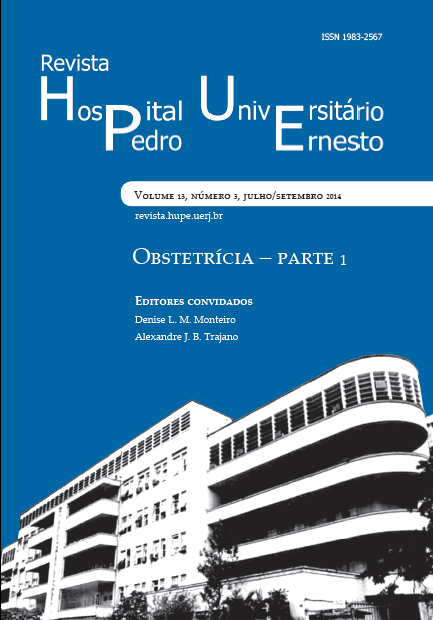Hyperthyroidism in Pregnancy
DOI:
https://doi.org/10.12957/rhupe.2014.12131Abstract
The aim of this review is to highlight that early identification of hyperthyroidism during pregnancy allows early initiation of treatment, avoiding serious consequences for maternal and fetal health. The prevalence of hyperthyroidism in pregnancy ranges from 0.1% to 0.4% and may manifest clinically as subclinical hyperthyroidism, thyrotoxicosis and thyroid storm. The diagnosis is suspected by the occurrence of weight loss, sweating, anxiety, tachycardia, hypertension and increased thyroid volume, being confirmed by deletion or non-detection of serum TSH and free T4 (FT4) elevation. The TRAb should be requested when the etiology is unknown, those undergoing treatment with radioactive iodine or thyroidectomy before pregnancy due to Graves’ disease (GD) or clinical findings compatible with the disease. Pregnant women with hyperthyroidism should be accompanied with TSH, FT4 and FT3 at the first prenatal consultation and monthly. The treatment of hyperthyroidism is based on the use of propylthiouracil (PTU) and methimazole (MMZ). In the first trimester of pregnancy should use the PTU from the effects of MMZ embryonic level. However, the PTU should be replaced by MMZ after this period for its hepatotoxicity. Patients using PTU should have liver enzymes monitored during treatment every four weeks as well as thyroid function. Early diagnosis and identification of the etiology and early and appropriate treatment of hyperthyroidism are important to avoid complications such as thyroid storm, miscarriage, gestational hypertension, low birth weight, intrauterine growth restriction, stillbirth, neonatal thyroid dysfunction, premature birth and placental abruption.Downloads
Published
2014-07-29
Issue
Section
Artigos


